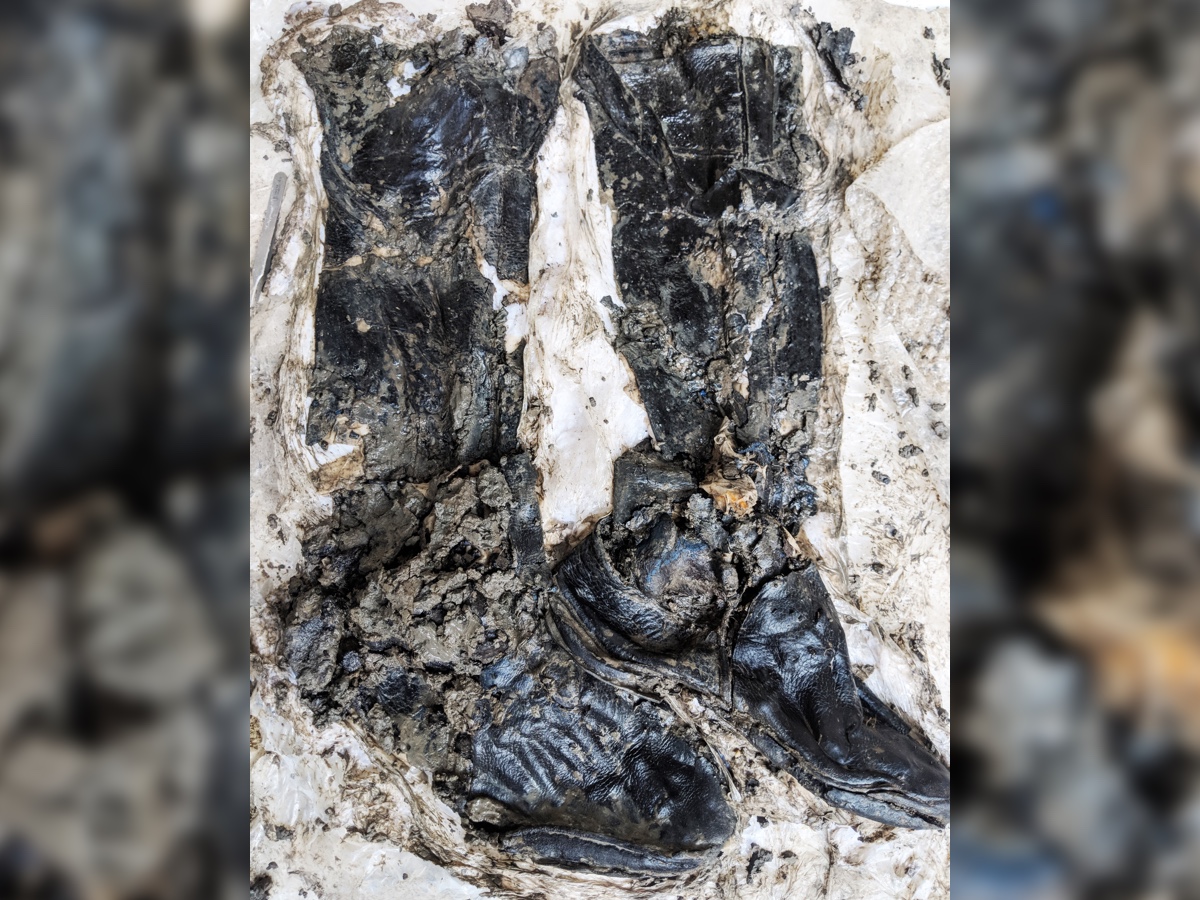500-Year-Old Body of Man Wearing Thigh-High Boots Found in London Sewer Construction

During the construction of London's massive "super sewer," archaeologists discovered something unusual in the mud: a 500-year-old skeleton of a man still wearing his thigh-high leather boots.
The Museum of London Archaeology (MOLA) announced this week that the skeleton was unearthed on the shores of the Thames, near a bend in the river downstream from the Tower of London.
"By studying the boots, we've been able to gain a fascinating glimpse into the daily life of a man who lived as many as 500 years ago," said Beth Richardson, a finds specialist who analyzes artifacts at MOLA Headland, a consortium of archaeologists. "They have helped us to better understand how he may have made his living in hazardous and difficult conditions, but also how he may have died. It has been a privilege to be able to study something so rare and so personal." [See Photos of the Skeleton Wearing Boots]
The blackened boots had some custom features: They were reinforced with extra soles and stuffed with a mossy material, perhaps for warmth or a better fit. Based on the boot style, the researchers think this man died in the late 15th or early 16th century.
The boots are also an indication that the man's burial wasn't an intentional one; leather boots at the time were quite expensive and likely would have been recycled, not buried with the dead. The skeleton was found facedown with his arms splayed over his head, another hint that his body was quickly covered with mud after death.

But with no obvious fatal injuries visible on the bones, the man's cause of death remains a mystery. MOLA researchers floated at least one possibility — that he fell into the mud, perhaps while climbing a wall upstream, and got trapped and drowned. The area where the man was found is a natural confluence where materials build up in the river, MOLA researchers said.
Archaeologists were able to glean some ideas about the man's life from the evidence. Worn grooves on his teeth might have been caused by a repetitive action — maybe he was a sailor or a fisherman who had to pass ropes through his teeth, the researchers speculated. Those thigh-high leather boots would have been appropriate for a life on the water, as they would have kept a person's legs and feet dry while wading through the Thames' muck.
Sign up for the Live Science daily newsletter now
Get the world’s most fascinating discoveries delivered straight to your inbox.
"Marks on his skeleton have allowed us to proffer ideas about the aches and pains he may have suffered from on a daily basis, the toll his job took on his body and even a little about what he might have looked like," Niamh Carty, an osteologist at MOLA Headland, said in a statement.
The researchers also think the man, who may have been no older than 35, suffered from osteoarthritis, perhaps caused by repetitive work and stress on his bones.
The Thames Tideway Tunnel is a 15-mile-long (25 kilometers) sewer designed to stop the overflow of waste in London's sewer system from getting into into the Thames. ("Fatbergs" that clog Victorian-era pipes are a recurring problem.) The project is expected to be completed around 2024; the burial was discovered during the construction of a shaft where one of the tunnel's boring machines will be digging.
The Thames is sometimes considered London's longest archaeological site, and the river muck has historically turned up a lot of surprising finds, from Neolithic wooden clubs to broken-up pieces of Napoleonic-era warships. For more than 10 years, the Thames Discovery Programme has been organizing groups of volunteers to look for artifacts and monitor archaeological remains that are exposed when the tide is low.
- 25 Grisly Archaeological Discoveries
- The 25 Most Mysterious Archaeological Finds on Earth
- In Photos: Medieval Skeleton Entangled in Tree Roots
Original article on Live Science.










